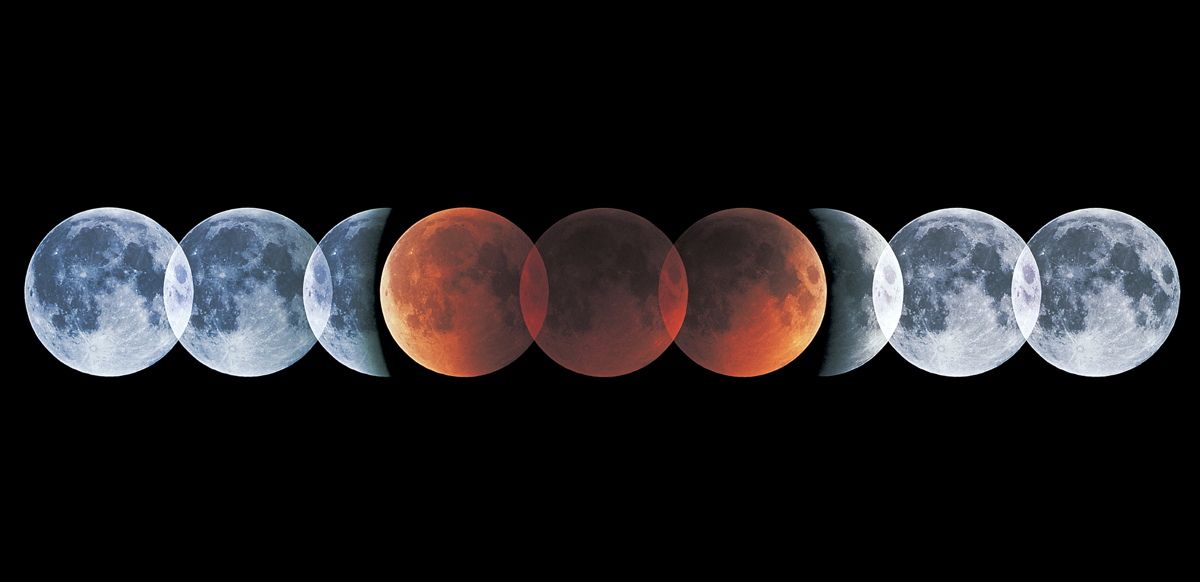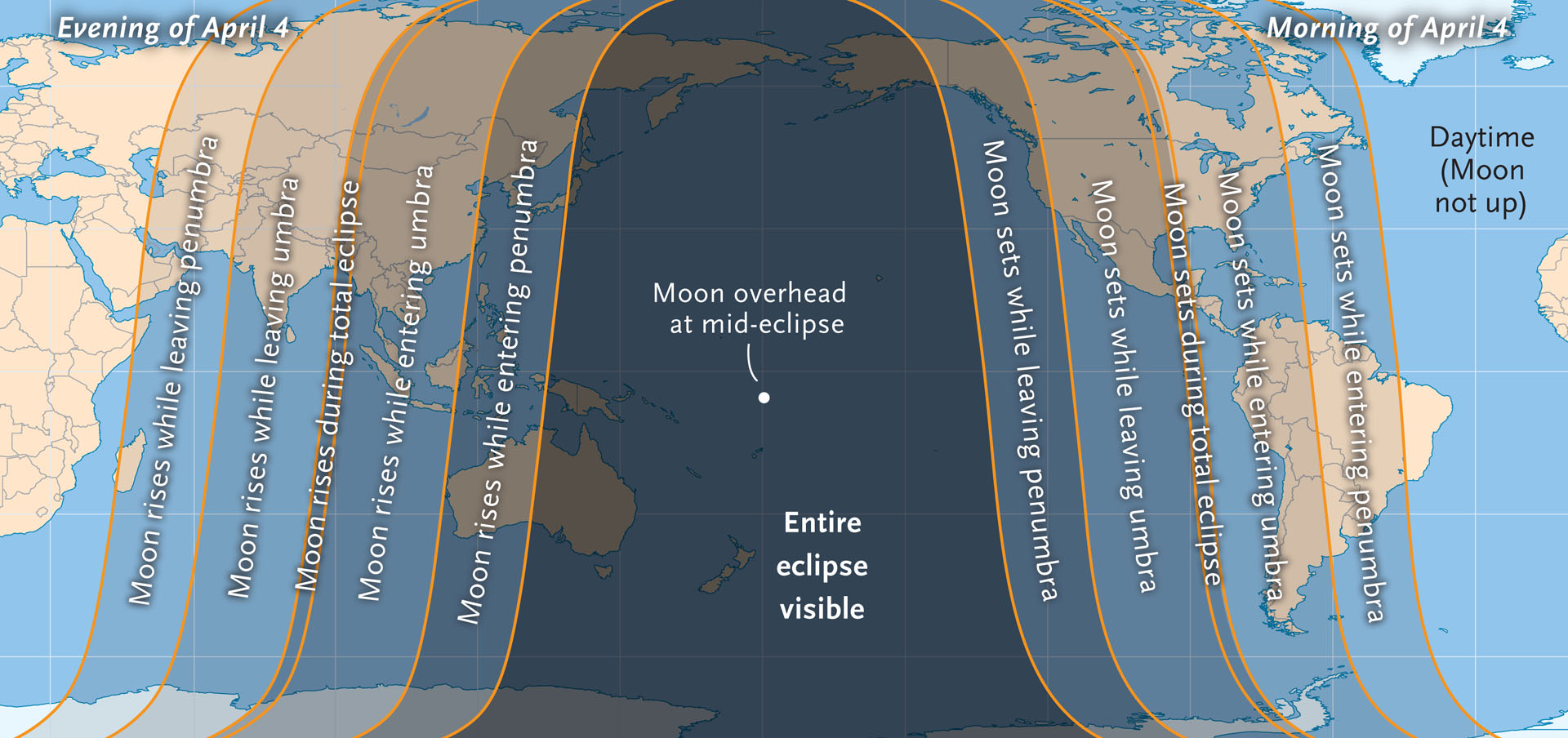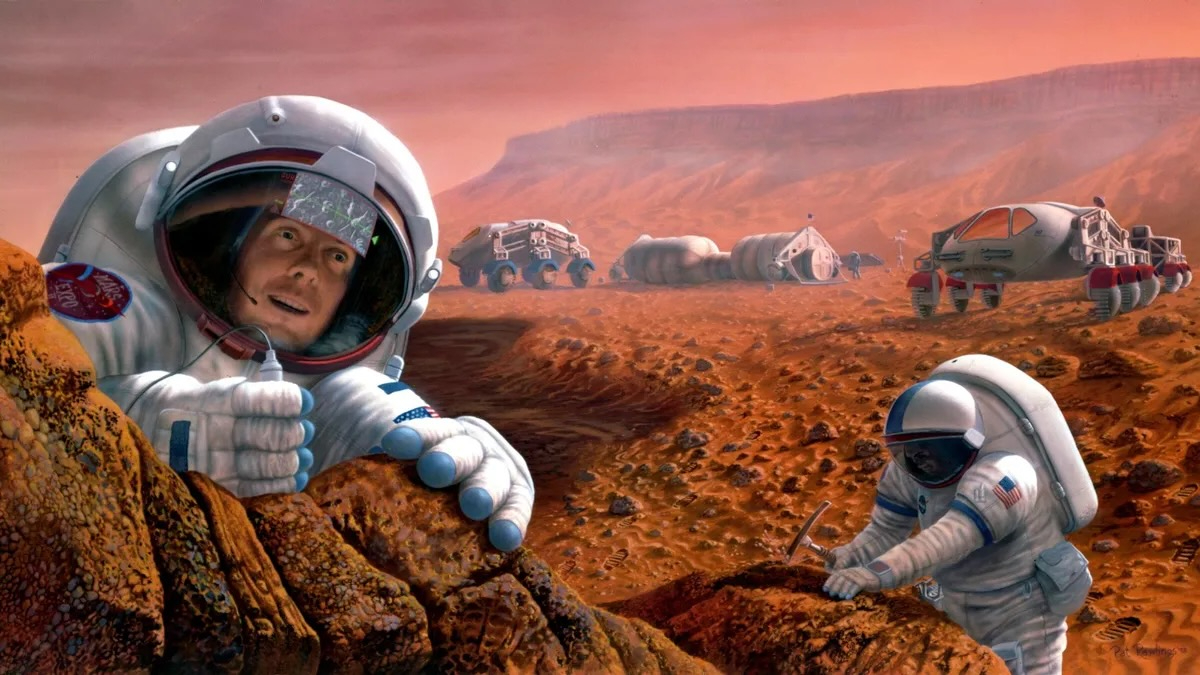Shortest Total Lunar Eclipse of the Century Visible Early Saturday

Don't forget to look skyward in the early hours of Saturday morning (April 4), to catch a glimpse of the shortest total lunar eclipse of the century.
The moon will be completely swallowed by Earth's shadow for just 4 minutes and 43 seconds on Saturday morning, according to NASA officials. During that time, the moon may change from its normal grayish hue to a deep, blood red. The total eclipse begins at 6:16 a.m. EDT (1016 GMT). You can watch a live webcast of the eclipse on the Slooh Observatory website, Slooh.com, or here at Space.com courtesy of Slooh, starting at 6 a.m. EDT (1000 GMT).
That color change can make for a dramatic display, especially for humans in the distant past, NASA officials said.
"For early humans, [a lunar eclipse] was a time when they were concerned that life might end, because the moon became blood red and the light that the moon provided at night might have been taken away permanently," Mitzi Adams, an astronomer at NASA's Marshall Space Flight Center in Huntsville, Alabama, said during a news conference today (April 3). "But fortunately, [the light] always returned." [How to See the April 4 Lunar Eclipse (Photo Guide)]
The April 4 eclipse is the third in a series of four total lunar eclipses — known as a lunar tetrad — visible in the United States. Each of the eclipses is separated by about 6 months. The final installment of this four-eclipse series will occur on Sept. 28. Saturday's lunar eclipse follows closely behind the total solar eclipse that took place on March 20.
Earth's shadow has an outer ring, called the penumbra, and an inner core, called the umbra. Where the moon passes into the penumbra, it appears dark, as if a bite had been taken out of it. When the moon passes though the umbra, it turns a deep, red color.
A total lunar eclipse occurs when the moon is totally submerged in the umbra. On Saturday, the moon will begin to enter the umbra at about 6:16 a.m. EDT (1016 GMT) but will not be completely covered by the shadow until about 7:57 EDT (1157 GMT), after the moon has set in most locations east of the Mississippi River.
Breaking space news, the latest updates on rocket launches, skywatching events and more!
While the total eclipse will last less than five minutes, the moon will be partially submerged in the umbra for about one hour and 40 minutes. The dark shadow of the penumbra will first be visible on the moon's surface starting at about 5:35 a.m. EDT (0935 GMT), according to Sky and Telescope magazine.
Viewers west of the Mississippi River will be able to see the total lunar eclipse, starting at about 4:57 a.m. PDT (1157 GMT). Skywatchers in Hawaii and western Alaska will be able to watch the entire eclipse, from the moon's entrance to its exit from the penumbra.
This weekend's eclipse is extremely short because the moon is only passing through the outskirts of the umbra. (The shortest total lunar eclipse in recorded history, according to Adams, was in 1529 and lasted only 1 minute and 41 seconds).
The eclipse will not be visible in Europe or most of Africa. The partial eclipse will be visible in all except the easternmost parts of South America. The best viewing locations for the total eclipse will be in the Pacific region, including eastern Australia, New Zealand and other parts of Oceania.
Editor's Note: If you snap an amazing picture of the lunar eclipse Saturday or any other night sky view that you'd like to share for a possible story or image gallery, send photos, comments, and your name and location to managing editor Tariq Malik at spacephotos@space.com.
Follow Calla Cofield @callacofield. Follow us @Spacedotcom, Facebook and Google+. Original article on Space.com.

Calla Cofield joined Space.com's crew in October 2014. She enjoys writing about black holes, exploding stars, ripples in space-time, science in comic books, and all the mysteries of the cosmos. Prior to joining Space.com Calla worked as a freelance writer, with her work appearing in APS News, Symmetry magazine, Scientific American, Nature News, Physics World, and others. From 2010 to 2014 she was a producer for The Physics Central Podcast. Previously, Calla worked at the American Museum of Natural History in New York City (hands down the best office building ever) and SLAC National Accelerator Laboratory in California. Calla studied physics at the University of Massachusetts, Amherst and is originally from Sandy, Utah. In 2018, Calla left Space.com to join NASA's Jet Propulsion Laboratory media team where she oversees astronomy, physics, exoplanets and the Cold Atom Lab mission. She has been underground at three of the largest particle accelerators in the world and would really like to know what the heck dark matter is. Contact Calla via: E-Mail – Twitter

